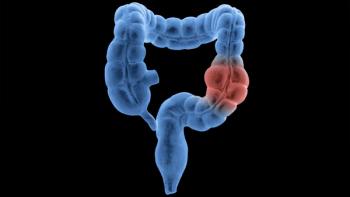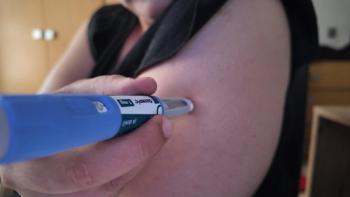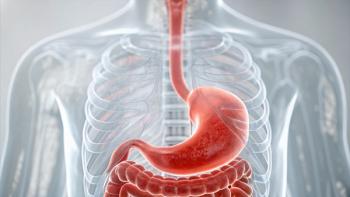
Long-Term Safety and Efficacy Is Reported With Partial-Breast Radiotherapy in Early-Stage Breast Cancer
Reduced-dose or partial-breast radiotherapy showed comparable safety and efficacy outcomes compared with whole-breast radiotherapy.
A 10-year follow-up of the phase 3 IMPORT LOW trial (ISRCTN12852634) showcased long-term safety and similar efficacy outcomes—including similar rates of ipsilateral breast tumor relapse (IBTR)—among patients with early-stage breast cancer who received reduced-dose or partial-breast radiotherapy compared with patients who received whole breast radiotherapy. Findings were presented at the 2023 American Society for Radiation Oncology (ASTRO) Annual Meeting.1
Findings showed that at a median follow-up of 120.3 months (interquartile range, 119.4-121.8), patients in the reduced-breast radiation group (n = 673) experienced an estimated 10-year IBTR rate of 1.9% (95% CI, 1.1%-3.4%) compared with 2.8% (95% CI, 1.8-4.5%) in patients who received whole-breast radiation (n = 674; HR, 0.63; 95% CI, 0.30-1.35). The estimated 10-year IBTR rate was 2.8% (95% CI, 1.7%-4.5%) for patients the partial-breast radiation group (n = 669; HR vs whole-breast radiation, 0.99; 95% CI, 0.51-1.94).
“We have pleasingly very low local relapse rates, as we anticipated, in this population, and [almost] no difference between those 3 arms,” lead study author Anna Kirby, MB, BChir, MA, MRCP, FRCR, MD(Res), medical oncologist at the Royal Marsden Hospital NHS Foundation Trust, London, United Kingdom, said in a presentation of the data. “To put that in context of regional and distant relapse, we saw no differences between the arms, no difference in contralateral breast cancers, and no significant differences in other causes of death, such as breast cancer, secondary cancers, [or] cardiac deaths.”
Previously in 2017, the 5-year analysis of the IMPORT LOW study was published in The Lancet, which showed no significant difference in IBTR rates between the 3 arms and non-inferiority of partial-breast and reduced-dose radiotherapy compared to whole-breast radiotherapy. Additionally, there were equivalent or fewer late normal tissue effects (NTEs) in the experimental arms.2
IMPORT LOW was a multicenter, randomized, controlled, non-inferiority study that enrolled female patients at least 50 years of age with a tumor size of no more than 3 cm who had undergone breast conservation surgery with adjuvant systemic therapy. Patients needed to have grade 1, 2, or 3 invasive, unifocal adenocarcinoma that was N0 or N1. The minimum microscopic margin was at least 2 mm.1
Patients were randomly assigned 1:1:1 to receive 15 daily fractions of either whole-breast radiation at 40Gy, reduced-dose radiotherapy consisting of 36 Gy to the whole breast and 40 Gy to the partial breast, or partial-breast radiation comprised of 40 Gy to the partial breast only.2
The primary end point was IBTR. Secondary end points included evaluation of NTEs assessed by clinicians at 1, 2, 5, and 10 years and by patients at 6 months, 1, 2, and 5 years, as well as contralateral breast tumor, regional and distant metastases, disease-specific survival, and overall survival (OS).1
A total of 2016 patients were treated at 30 radiotherapy centers across the United Kingdom. The median age of patients was 62 years (range, 50-90) in the whole-breast radiation cohort, 63 years (range, 50-91) in the reduced-dose radiation cohort, and 62 years (range, 50-91) in the partial-breast radiation cohort. The median tumor size was 1.2 cm (range, 0.1-3.0), 1.1 cm (range, 0.1-3.0), and 1.2 cm (range, 0.1-3.0), respectively. Forty-five percent, 46%, and 9% patients in the whole-breast radiation group had grade 1, 2, and 3 tumors, respectively. These rates were 40%, 49%, and 11%, respectively, in the reduced-dose group, and 42%, 48%, and 10%, , in the partial-breast radiotherapy group.
The majority of patients were node negative (96%, 97%, and 98% for the whole-breast, reduced-dose, and partial-breast groups, respectively), were negative for lymphovascular invasion (93%, 90%, and 93%), had estrogen receptor–positive disease (95%, 95%, and 95%), and had HER2-negative disease (96%, 96%, and 94%).
Additional data showed regional relapse occurred in 3, 4, and 5 patients in the whole-breast radiation, reduced-dose radiation, and partial-breast radiation arms, respectively. Distant relapse was reported in 25, 27, and 24 patients, respectively.
The 10-year overall survival (OS) rates were 88.0% (95% CI, 85.2%-90.3%), 87.1% (95% CI, 84.2%-89.4%), and 90.4% (95% CI, 87.8%-92.4%) in the whole-breast, reduced-dose, and partial-breast radiation groups, respectively. Causes of death in the whole-breast radiation arm (n = 81) included breast cancer (n = 16), secondary cancer (n = 28), cardiac (n = 9), other (n = 25), and unknown (n = 3). In the reduced-dose arm (n = 91), causes of death consisted of breast cancer (n = 20), secondary cancer (n = 29), cardiac (n = 6), other (n = 31), and unknown (n = 5). Causes of death in the partial-breast radiation arm (n = 67) were breast cancer (n = 22), secondary cancer (n = 19), cardiac (n = 5), other (n = 16), and unknown (n = 5).
The 10-year NTE-free estimates in the whole-breast, reduced-dose, and partial-breast radiation cohorts were 70.5% (95% CI, 64.1%-75.9%), 75.3% (95%CI, 69.6%-80.0%), and 95% CI, 69.1%-80.9%), respectively, per clinician assessment.
Serious late adverse effects included symptomatic rib fracture (0.6%, 0.9% and 0.4% in the whole-breast, reduced-dose, and partial-breast groups, respectively), symptomatic lung fibrosis (0.6%, 0.9% and 0.6%), and ischemic heart disease (1.3%, 0.7%, and 0.9%).
Based on data from the 10-year analysis of IMPORT LOW, Kirby said 15 fractions of 40 Gy external beam partial-breast radiotherapy remains the standard of care for patients with lower-risk breast cancer who are more than 50 years of age, have grade 1/2 disease, are T≤30 mm, are node negative, and are HER2-negative.
“[These are] not practice-changing data, but [they are] confirmatory data supporting the change in practice that happened in the United Kingdom and elsewhere following the [original] publication [of IMPORT LOW] back in 2017,” Kirby concluded.
References
- Kirby A, Griffin C, Finneran L, et al. Partial breast radiotherapy for women with early breast cancer: 10-Year outcomes from IMPORT LOW (CRUK/06/003). Presented at: 2023 American Society for Radiation Oncology Annual Meeting (ASTRO); September 30 to October 4, 2023; San Diego, CA. Abstract LBA10.
- Coles CE, Griffen CL, Kirby AM, et al. Partial breast radiotherapy after breast-conserving surgery for patients with early breast cancer (UK IMPORT LOW trial): 5-year results from a multicentre, randomised, controlled, phase 3, non-inferiority trial. Lancet . 2017;390(10099):1048-1060. doi:10.1016/S0140-6736(17)31145-5
Newsletter
Knowledge is power. Don’t miss the most recent breakthroughs in cancer care.

























































































